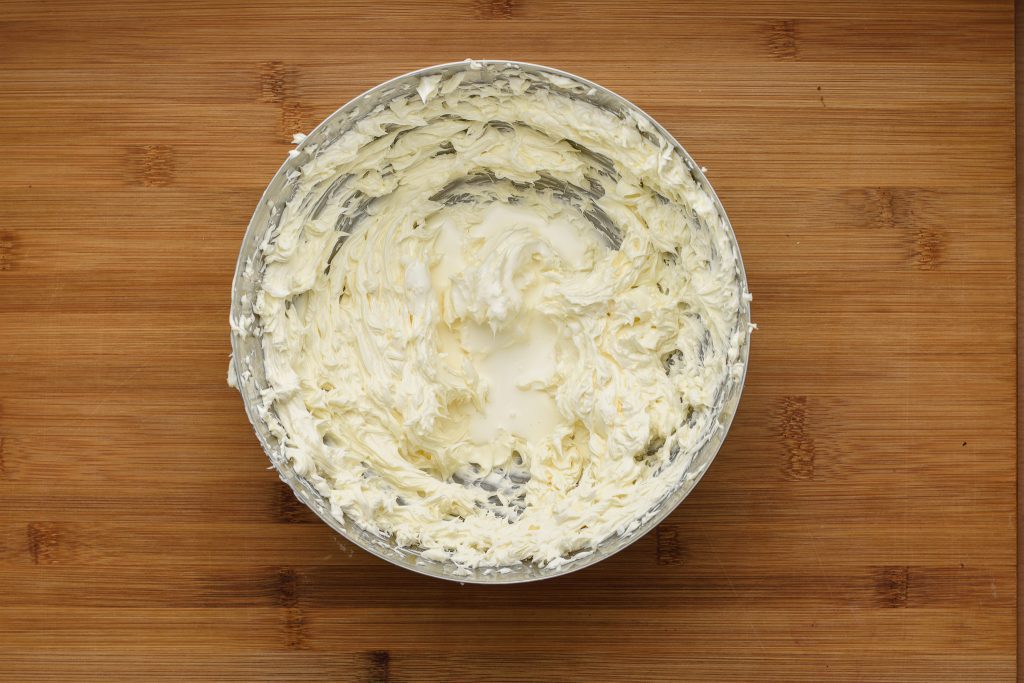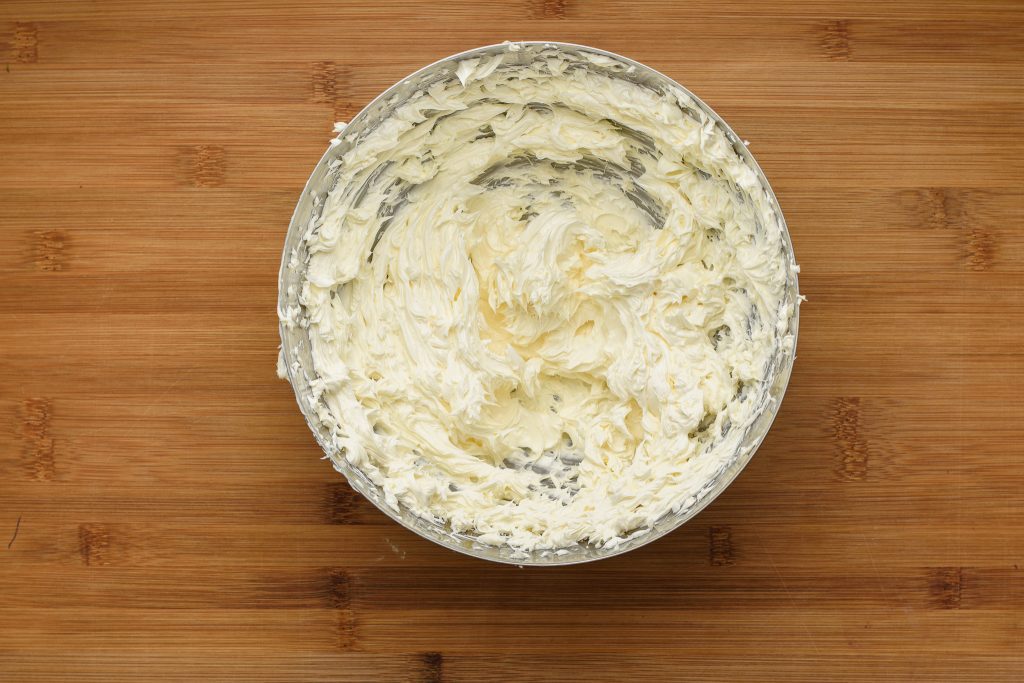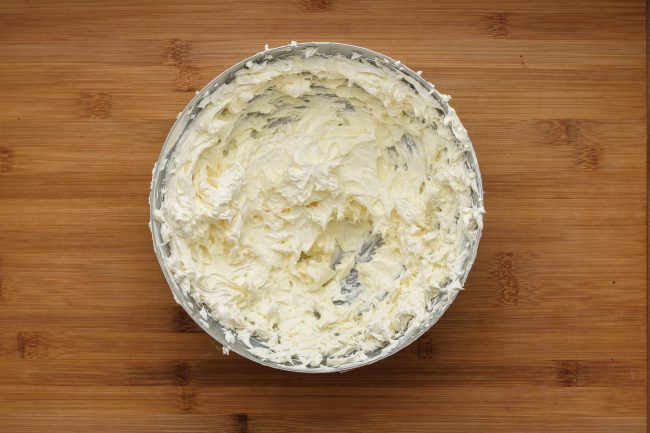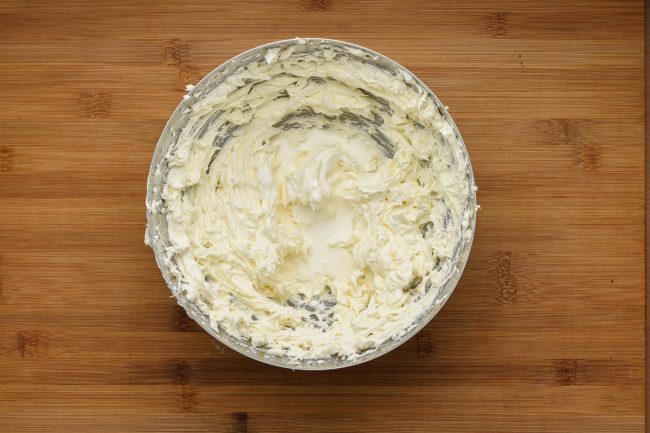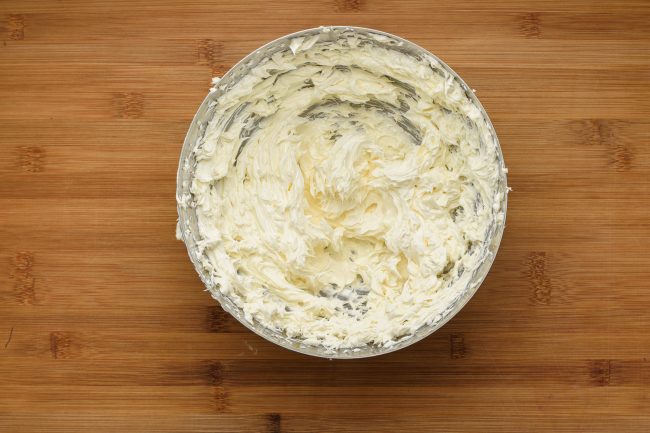Looking for the perfect filling or something to cover up an almost perfect cake? Let’s whip up one of these buttercream frosting recipes!
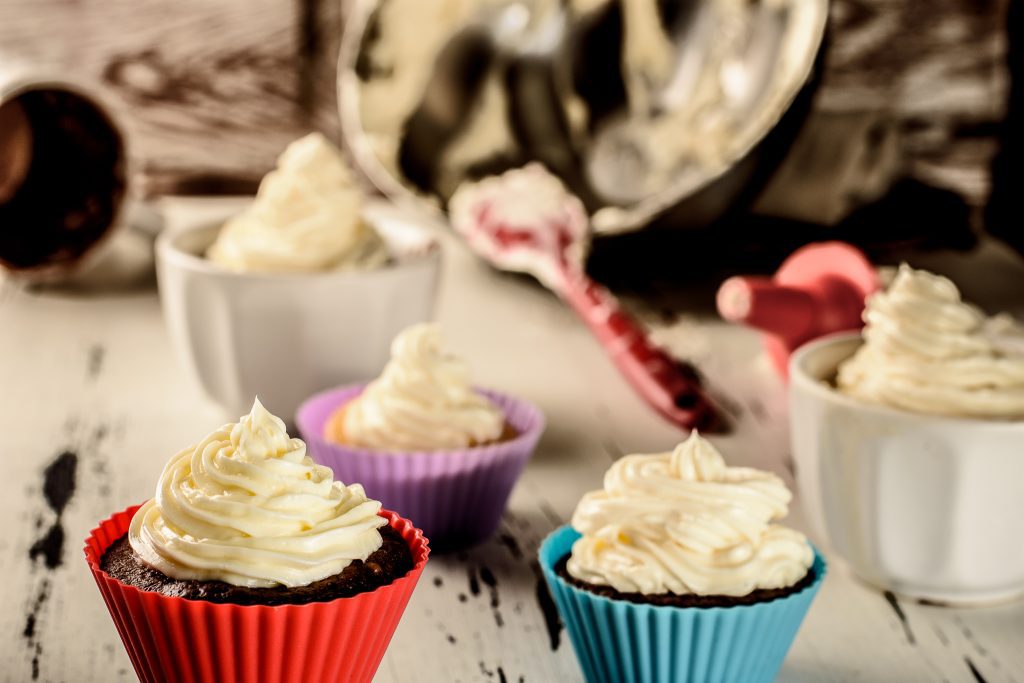
Buttercream in its most basic form is exactly what it sounds like. Creamed butter. A room temperature butter fluffed up with some air bubbles by a swift whisking hand or in modern times with an electric beater.
Is there more than one buttercream?
Of course, creamed butter wouldn’t be such a hit if it was applied on cakes on its own, so additional ingredients such as some kind of sweetener is used to make the first bite more memorable than plain bread and butter.
From its base somewhat plain form, the buttercream can be pumped up with various techniques that all include making meringue first and mixing it with the buttercream increasing its volume, difficulty, and popularity.
Beside of the basic or so-called American buttercream that is the (not surprisingly) easiest and sweetest buttercream due to its 2:1 sugar ratio, there are the widely used Swiss and Italian buttercream then the less popular French, German, and Korean versions.
What’s in the cream?
Their name doesn’t have much to do where the buttercream was invented but rather the type of meringue is used in their making.
Swiss meringue buttercream incorporates Swiss meringue with the butter, expanding the overall volume of the cream.
Making Swiss meringue requires a bain-marie or double boiler as it is known in the common tongue. Egg white and sugar is beaten over the heat of the boiling water until the sugar is fully incorporated and the egg whites grow in volume then taken off heat and whisked further until cooled. After that the cooled Swiss meringue mixed together with the creamed butter and there we have a Swiss buttercream that can be used for everyone’s delight.
A step further from the Swiss meringue buttercream, we can find the Italian meringue buttercream which isn’t as difficult as the Swiss counterpart equipment wise but requires steady hands for its making. As Italian meringue needs boiling sugar syrup beaten into the egg whites.
While in the case of the Swiss meringue the egg whites are cooked by the heat of the vapor from the double boiler, the Italian meringue’s eggs are treated by the residual heat of the 240°F / 116°C boiling syrup.
Are there more buttercream?
When we feel adventurous, we can take a couple of strides out of the well-known territories and try our hand with different types of buttercream that fall out of the scope of ordinary, given that we have been raised in pre-Internet era kitchens.
French buttercream is the one that sounds the least alien if we can accept that it replaces the egg whites with the yolks. Of course, this minuscule step completely changes the look of the final product, given that egg whites are white and buttercream with yolks will be yellowish.
The process is the same as it is with the Italian meringue and we need to use overly hot syrup to treat the yolks that will produce custard like pastry cream.
Germans take it a notch further or rather a couple of notches further as the German buttercream requires custard to be made, cooled and then the cooled custard is beaten into the butter. This method produces a very silky, smooth (given that we weren’t angry at the world making it and followed the recipe to the letter) cream that any cake would beg to be filled with it.
Korean buttercream is the child of the new era, born on the world wide web and popularized by social media. The also called Glossy buttercream secret lies in the temperature that the butter is beaten into the Italian meringue. Apparently, the 50°F / 10°C butter can make a difference between creamy butter and glossy butter splendidly.
Which is the best buttercream?
Which buttercream to choose to decorate our cupcakes or fill our cakes with, is mostly up to our preference or need. Glassy buttercream may not be the best choice to fill our layered cakes with while the German buttercream may not be the best pick to make a rose out from.
It’s good to know that our cakes be them any strange or out of place won’t be alone in the wide world. There will be always something to fill in the void, hide the cracks or make a small difference that is worth the whole world to see.
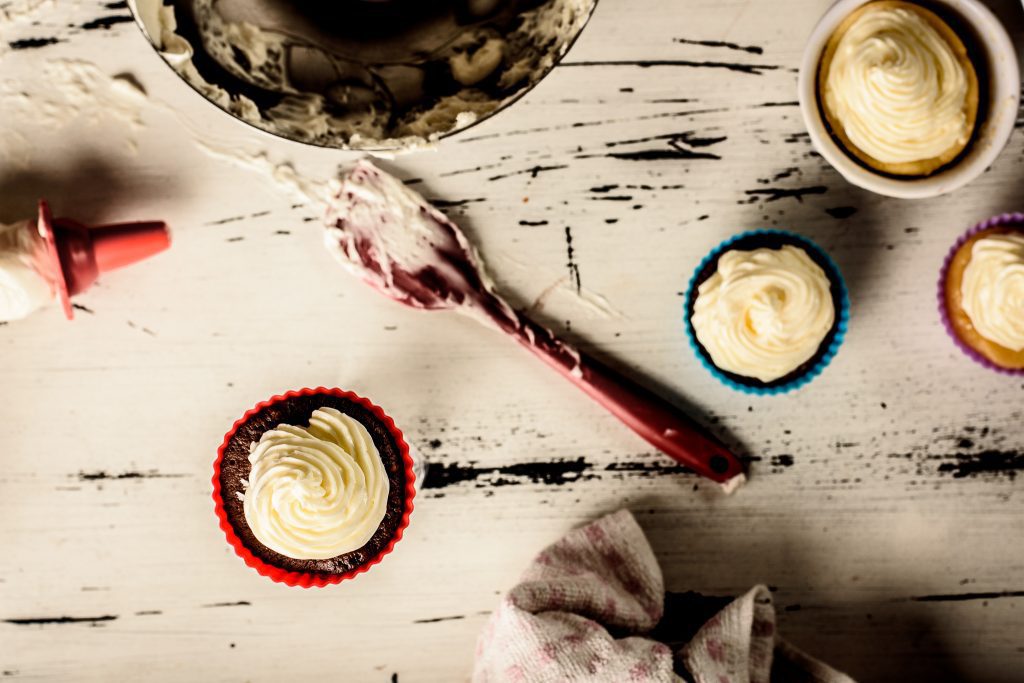
Ingredients
Beginner – American
- 2 sticks / 250g Butter
- 1lb / 500g Sugar or sweetener of choice to taste
- 3 tablespoons Heavy cream or milk
American buttercream originally contains 2:1 ratio sugar to butter by weight which is outrageous amount of sugar to any but especially daunting for those who’d like to live a happy life. Replace sugar with sweetener of choice and only add as much as absolutely necessary to cover the butter flavor.
Advanced – Swiss – Italian – French
- 5 Egg whites (French buttercream uses egg yolks instead of egg whites)
- 4 sticks / 450g Butter
- 1½ cup / 300g Sugar or sweetener of choice to taste
- 1 – 3 tablespoons Heavy cream or milk (optional)
Overkill – German
- 2 cups / 500ml Milk
- 2 medium / 50g Egg yolks
- 6 tablespoons / 45g Corn starch
- 1 cup / 200g Butter
- Sweetener of choice to taste
How to make buttercream
Beginner – American
- Beat room temperature butter until it gets a white ivory color.

- Add the sweetener and beat it some more. If sugar like crystalized sweetener is used, beat it until the sugar is dissolved. Syrups like honey or agave need only a minute of thorough mixing. Add heavy cream or a bit of milk to thin out the cream if desired.

- Add flavoring and coloring as desired.

Enjoy!
Advanced – Swiss – Italian – French
- Whisk sweetener of choice into the egg whites. (French buttercream uses egg yolks instead of egg whites)
- In a double boiler whisk the egg whites until it reaches 160°F / 71°C and the mixture is thinned out for about 5 minutes. It should be hot to the touch and if crystalized sweetener like sugar is used, it should be completely dissolved when the frothy foam is rubbed between two fingers.
- Take the mixture off the heat and beat until it cools down to room temperature and hard peaks form for about 15 minutes. In Italian buttercream the egg white sweetening and double boiler part is skipped as the heat processing of the egg whites is done by 240°F / 115°C sugar syrup made with sugar and about 1/3 cup water gradually added to the beaten up egg whites.
- Gradually add room temperature / soft butter.
- Add flavoring and coloring as desired.
Enjoy!
Overkill – German
- Warm the milk up in a pot on medium heat until it starts to bubble gently.

- In a medium bowl, whisk the egg yolks for about a minute until light yellow and increased in volume.

- Whisk in the cornstarch, vanilla extract, sweetener and gradually about ½ cup of the hot milk.

- Slowly pour all of the egg yolk mixture into the scalding milk while stirring vigorously until the mixture seems completely dissolved.

- Keep warm and continuously stir until the custard thickens. Let the custard cool to room temperature.

- Cream the butter.

- Mix the creamed butter and custard together.

Enjoy!

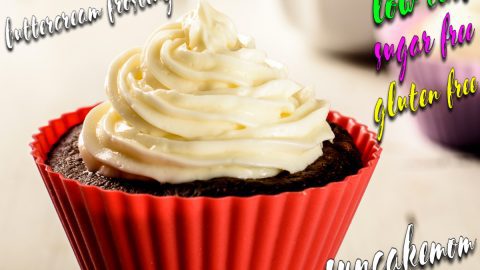

Star this recipe!
Buttercream Frosting Recipe
Ingredients
Beginner – American
- 2 sticks Butter
- 1 lb Sugar or sweetener of choice to taste
- 3 tablespoons Heavy cream or milk
- American buttercream originally contains 2:1 ratio sugar to butter by weight which is outrageous amount of sugar to any but especially daunting for those who’d like to live a happy life. Replace sugar with sweetener of choice and only add as much as absolutely necessary to cover the butter flavor.
Advanced – Swiss – Italian – French
- 5 Egg whites French buttercream uses egg yolks instead of egg whites
- 4 sticks Butter
- 1½ cup Sugar or sweetener of choice to taste
- 1 – 3 tablespoons Heavy cream or milk optional
Overkill – German
- 2 cups Milk
- 2 Egg yolks
- 6 tablespoons Corn starch
- 1 cup Butter
- Sweetener of choice to taste
Instructions
Beginner – American
- Beat room temperature butter until it gets a white ivory color.

- Add the sweetener and beat it some more. If sugar like crystalized sweetener is used, beat it until the sugar is dissolved. Syrups like honey or agave need only a minute of thorough mixing. Add heavy cream or a bit of milk to thin out the cream if desired.

- Add flavoring and coloring as desired.

- Enjoy!
Advanced – Swiss – Italian-French
- Whisk sweetener of choice into the egg whites. (French buttercream uses egg yolks instead of egg whites)
- In a double boiler whisk the egg whites until it reaches 160°F / 71°C and the mixture is thinned out for about 5 minutes. It should be hot to the touch and if crystalized sweetener like sugar is used, it should be completely dissolved when the frothy foam is rubbed between two fingers.
- Take the mixture off the heat and beat until it cools down to room temperature and hard peaks form for about 15 minutes. In Italian buttercream the egg white sweetening and double boiler part is skipped as the heat processing of the egg whites is done by 240°F / 115°C sugar syrup made with sugar and about 1/3 cup water gradually added to the beaten up egg whites.
- Gradually add room temperature / soft butter.
- Add flavoring and coloring as desired.
- Enjoy!
Overkill – German
- Warm the milk up in a pot on medium heat until it starts to bubble gently.
- In a medium bowl, whisk the egg yolks for about a minute until light yellow and increased in volume.
- Whisk in the cornstarch, vanilla extract, sweetener and gradually about ½ cup of the hot milk.
- Slowly pour all of the egg yolk mixture into the scalding milk while stirring vigorously until the mixture seems completely dissolved.
- Keep warm and continuously stir until the custard thickens. Let the custard cool to room temperature.
- Cream the butter.
- Mix the creamed butter and custard together.
- Enjoy!
Notes
Pin now, Enjoy later!


